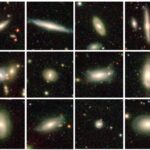
Do black holes munch on other black holes and galaxies? Image: Shutterstock
Twenty-eight thousand light years away from Earth, towards the centre of the Milky Way, an unexpectedly mighty hurricane blows around a tiny black hole.
It is the strongest wind ever observed by astronomers, and a great surprise because these ‘pushed-off’ particles exceed the speed of 30 million km/h, nearly three per cent of the speed of light. This black hole is part of a binary system where a sun-like star and black hole revolve around each other.
IGR J17091-3624 is the name of this tiny but powerful cosmic phenomenon. It has been formed by an end-of-life-cycle explosion and a left-over-mass contraction of a star. Its wind force reaches the level of super massive black holes that absorbed millions or even billions of comparable sun masses. Therefore, this observation came as a fairly big surprise to all scientists — and it was not the only one. Up to 95 per cent of the matter in the accretion disc around IGR J17091 is blown away by this ‘hurricane’.
The popular belief of all-consuming black holes needs to be revisited. Some scientists still speculate about the rotational geometry of magnetic fields and the mass consumption rate of IGR J17091 that may cause its unexpected behaviour; but it can be explained by the functional exchange of physical parameters and leads to the models of a cosmic super symmetry of energies — including stagnation and opposing acceleration aspects of space-time parameters. Scientists around the globe work on different concepts, hoping to derive a Grand Unified Theory (GUT), a theory of everything.
Symmetry and rotational features shape our nature in nearly all its aspects: revolving electrons with quantum physical probabilities of whereabouts around their atomic nuclei, planets around their suns and planet systems around the core of their galaxies. The incredibly favourable incidence angle of the Mars-sized planet Theia, colliding with Pre-Earth in its early period, is supposed to have significantly supported the formation of our comparatively big moon and Earth’s stable axial tilt. Complex life forms, like us humans, most probably would not exist without this cosmic disaster, causing the orbits of these two celestial bodies around each other in the habitable zone around our sun. Their distance increases slowly but continuously because of the ocean tide. Rotation is one basic principle in our universe, and mathematicians and economists even introduced calculable rotational principles in their assessment of economic stability, evaluating the circulation of goods, money and many other aspects of society interaction.
Rotational aspects of Einstein’s space-time with functional exchange of physical parameters and rotational features of energies complete the picture. We could take a very thin but long glass tube, representing one dimension of three-dimensional space around us, and then look at it with one eye. Then we turn this tube around. Once the full length of this tube is visible we can further turn it in a way that only one or the other end remains detectable. The length of the entire tube disappears because it turns into the focus axis of this eye, seemingly hiding in one dimension of our three dimensions of space. Remembering now that during Einstein’s era time got equal rights as any length of three-dimensional space, we should be able to turn the length of the tube somehow into the direction of a straight or even curved time axis instead of rotating it just into another direction in space. Relative speed in space exactly generates such an effect and any huge aggregation of matter as well. Meanwhile, it is not just a theoretical assumption, but a scientifically proven fact. Supersymmetry models turn such ‘glass tube dimensions’ and energy set-ups into alternative and opposing directions, or roll dimensions up and out. One of these geometric solutions, describing the magnetic fields, is supposed to reveal the mystery of the tiny black hole IGR J17091.
All feasible solutions are suspected of forming and driving the universe, possibly explaining many more facets of our existence, including the dominating presence of dark energy and dark matter. — By Henryk Frystacki






